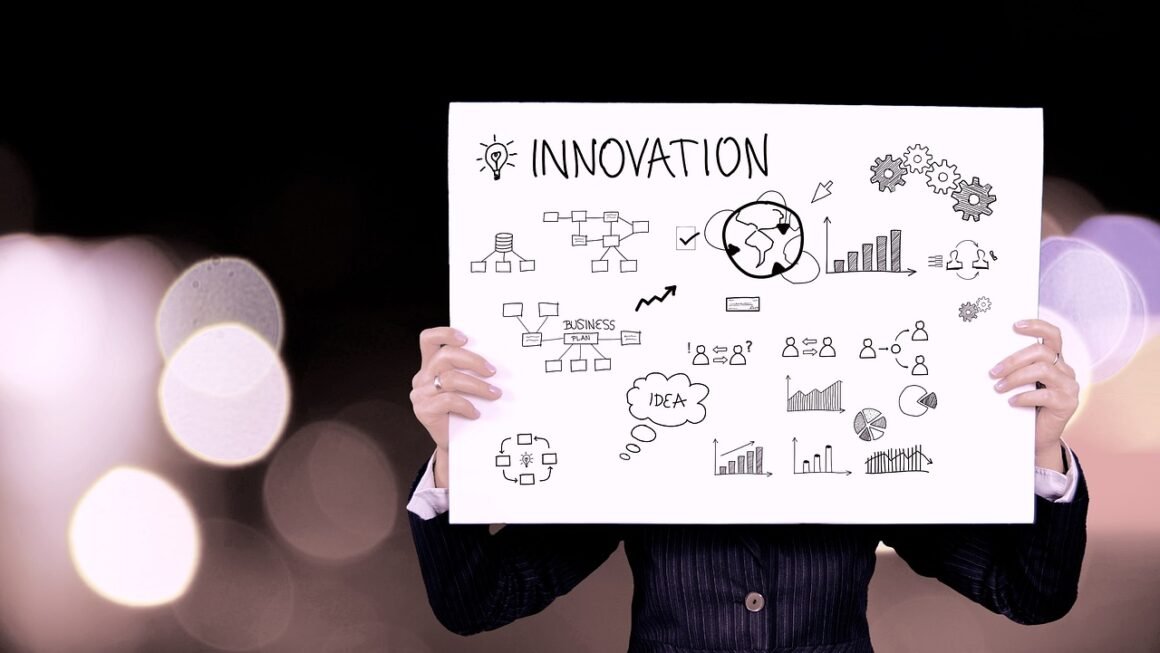Imagine a workday where you spend less time on repetitive tasks and more time on strategic initiatives that drive your business forward. This isn’t a pipe dream; it’s the reality achievable through implementing a smart workflow. In today’s fast-paced business environment, optimizing how your team works is crucial for boosting productivity, reducing errors, and improving overall efficiency. Let’s explore how to build and implement smart workflows to transform your organization.
Understanding Smart Workflow
What is a Smart Workflow?
A smart workflow is a series of automated and interconnected tasks designed to streamline processes, eliminate bottlenecks, and improve collaboration. It leverages technology, such as workflow automation software, to guide tasks from initiation to completion, ensuring consistency and reducing manual intervention. It goes beyond a simple task list by incorporating rules, triggers, and dependencies to intelligently manage the flow of information and actions.
- Key characteristics of a smart workflow include:
Automation: Reducing manual tasks through software.
Standardization: Creating consistent processes across the organization.
Transparency: Providing visibility into task progress and accountability.
Integration: Connecting different systems to share data seamlessly.
Flexibility: Adapting to changing business needs and priorities.
Benefits of Implementing Smart Workflows
Implementing smart workflows can yield significant benefits for businesses of all sizes. Some key advantages include:
- Increased Productivity: Automating repetitive tasks frees up employees to focus on higher-value activities. Studies have shown that workflow automation can increase productivity by up to 40%.
- Reduced Errors: Standardized processes minimize the risk of human error and ensure consistency in output.
- Improved Collaboration: Smart workflows facilitate better communication and collaboration between team members, fostering a more cohesive work environment.
- Cost Savings: Optimizing processes can lead to significant cost savings by reducing waste, improving efficiency, and minimizing errors.
- Better Compliance: Standardized workflows help ensure compliance with regulations and internal policies.
- Enhanced Customer Satisfaction: Faster turnaround times and improved service quality can lead to greater customer satisfaction.
Building a Smart Workflow
Identifying Areas for Improvement
The first step in building a smart workflow is to identify areas where current processes are inefficient, time-consuming, or prone to errors. This can be done through:
- Process Mapping: Visualize existing workflows to identify bottlenecks and areas for improvement.
- Employee Feedback: Gather input from employees who perform the tasks to understand their pain points and suggestions.
- Data Analysis: Analyze data on task completion times, error rates, and other metrics to identify areas that need attention.
For example, if your sales team spends a significant amount of time manually entering customer data into multiple systems, this could be an area ripe for automation.
Choosing the Right Technology
Selecting the right workflow automation software is crucial for the success of your smart workflow implementation. There are many options available, so it’s important to consider your specific needs and budget.
- Key considerations when choosing workflow automation software:
Ease of Use: The software should be user-friendly and easy to learn.
Integration Capabilities: It should integrate seamlessly with your existing systems.
Customization Options: The software should be customizable to meet your specific workflow needs.
Reporting and Analytics: It should provide robust reporting and analytics capabilities.
Scalability: The software should be able to scale as your business grows.
Examples of popular workflow automation software include:
Asana
Trello
Monday.com
Zapier
Designing the Workflow
Once you have identified areas for improvement and chosen the right technology, you can begin designing your smart workflow.
- Key steps in designing a smart workflow:
1. Define the starting point: Identify the trigger that initiates the workflow.
2. Map out the tasks: List all the tasks that need to be completed in the workflow.
3. Assign responsibilities: Assign each task to a specific person or team.
4. Define dependencies: Identify any dependencies between tasks.
5. Set deadlines: Set realistic deadlines for each task.
6. Automate tasks: Automate as many tasks as possible using workflow automation software.
7. Implement notifications: Set up notifications to keep everyone informed of task progress.
8. Establish approval processes: Define clear approval processes for critical tasks.
9. Integrate systems: Integrate different systems to share data seamlessly.
10. Test the workflow: Thoroughly test the workflow to ensure it works as expected.
For instance, a workflow for onboarding new employees might start with the HR department initiating the process. Then, the IT department would be automatically notified to set up the employee’s computer and email account. The facilities department would be notified to prepare the employee’s workspace. Finally, the manager would be notified to schedule training and introductions.
Implementing and Managing Smart Workflows
Phased Rollout
Implementing smart workflows should be done in phases to minimize disruption and ensure a smooth transition.
- Phased rollout approach:
1. Pilot Project: Start with a small-scale pilot project to test the workflow and identify any issues.
2. Training: Provide training to employees on how to use the new workflow.
3. Gradual Expansion: Gradually roll out the workflow to other departments or teams.
4. Monitoring and Optimization: Continuously monitor the workflow and make adjustments as needed.
Training and Support
Providing adequate training and support is essential for the success of any smart workflow implementation.
- Key considerations for training and support:
Comprehensive Training: Provide comprehensive training on the new workflow and the workflow automation software.
Ongoing Support: Offer ongoing support to employees who have questions or need assistance.
Knowledge Base: Create a knowledge base with FAQs, tutorials, and other resources.
Dedicated Support Team: Consider establishing a dedicated support team to assist employees with workflow-related issues.
Monitoring and Optimization
Smart workflows are not a “set it and forget it” solution. They need to be continuously monitored and optimized to ensure they are delivering the desired results.
- Key metrics to monitor:
Task completion times
Error rates
Employee satisfaction
Customer satisfaction
Cost savings
Regularly review these metrics and make adjustments to the workflow as needed to improve efficiency, reduce errors, and enhance overall performance. Gathering feedback from users is critical to continuous improvement.
Advanced Strategies for Smart Workflow
Integrating AI and Machine Learning
Integrating artificial intelligence (AI) and machine learning (ML) into your smart workflows can unlock even greater levels of efficiency and automation.
- Examples of AI and ML applications in smart workflows:
Intelligent Routing: AI can analyze data to route tasks to the most appropriate person or team.
Automated Decision-Making: AI can automate routine decision-making processes.
Predictive Analytics: AI can use data to predict potential problems and proactively address them.
Natural Language Processing (NLP): NLP can be used to automate tasks such as extracting information from documents.
For example, an AI-powered workflow could automatically categorize and route customer support tickets based on the content of the ticket.
Using Robotic Process Automation (RPA)
Robotic Process Automation (RPA) can be used to automate repetitive, rule-based tasks that are difficult to automate with traditional workflow automation software.
- Examples of RPA applications in smart workflows:
Data Entry: RPA can automate data entry tasks.
Invoice Processing: RPA can automate invoice processing tasks.
Report Generation: RPA can automate report generation tasks.
* System Integration: RPA can integrate different systems that do not have native integration capabilities.
For instance, RPA could be used to automatically extract data from invoices and enter it into your accounting system.
Conclusion
Implementing smart workflows is a transformative strategy for businesses seeking to enhance productivity, reduce costs, and improve overall efficiency. By understanding the principles of smart workflow design, choosing the right technology, and embracing continuous monitoring and optimization, organizations can unlock significant benefits. Don’t hesitate to start small, iterate, and leverage advanced technologies like AI and RPA to continuously refine your workflows and stay ahead in today’s competitive landscape. The journey towards a smarter, more efficient workplace begins with a single step – evaluating your current processes and identifying opportunities for improvement.




